What Is a Slip and Fall Accident?
These accidents commonly occur during winter months when snow and ice accumulate on walkways, parking lots, and other outdoor areas.
While slip and fall accidents can occur anywhere, property owners and managers have a legal duty to ensure that their premises are safe for visitors, even during inclement weather.
This duty of care means taking appropriate measures to prevent slip and fall accidents, such as promptly removing snow and ice or applying preventive measures like de-icing agents or sand.
Failure to maintain safe conditions on the property can make the responsible party liable for any injuries that occur.
Premises liability laws vary by jurisdiction and the circumstances of each case. However, if a property owner or manager was negligent in maintaining safe conditions or failed to provide adequate warning signs of potential hazards, you may have a strong case for a personal injury lawsuit.
Whether it’s a dangerous icy sidewalk, an unmaintained walkway, or a hazardous parking lot, remember that you deserve protection and fair compensation for your injuries.
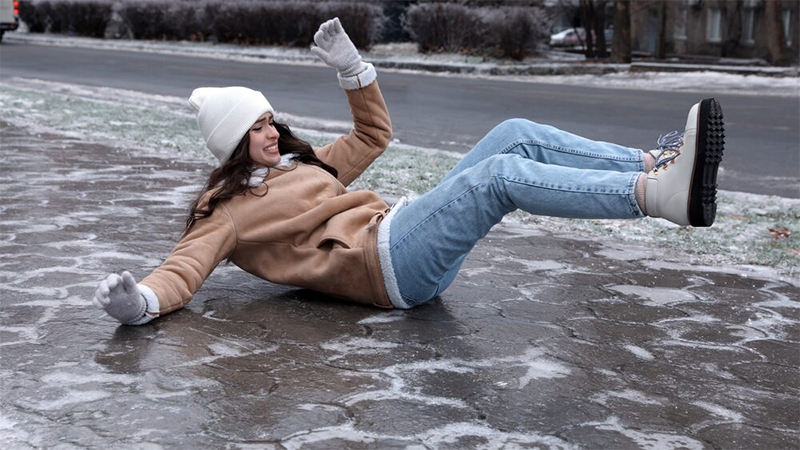
The Centers for Disease Control and Prevention reports that about 1 million U.S. adults are injured due to slips and falls every year, with the injury rate increasing significantly as temperatures decline. [1]
Who is Responsible for Keeping Properties Safe from Ice and Snow?
When winter weather hits, property owners and managers need to take proper measures to ensure the safety of everyone who visits their premises.
When it comes to liability, property owners can be held responsible for any injuries that occur due to their failure to maintain safe conditions.
If someone slips and falls on an unmaintained walkway or an icy sidewalk, for example, the owner may be considered negligent and liable for any resulting injuries.
Liability laws can vary depending on jurisdiction and the specific circumstances of each case. Some areas may have regulations regarding how quickly snow and ice must be removed, while others may distinguish between natural accumulations and areas that were negligently maintained.
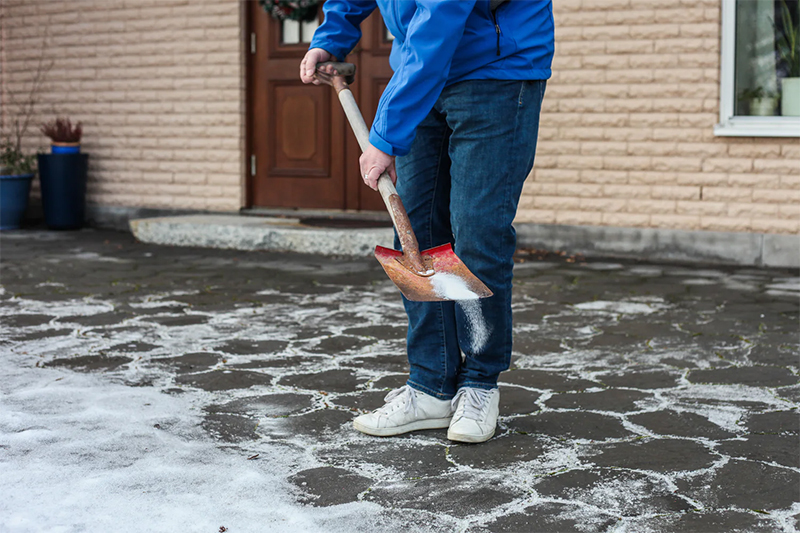
Understanding the Potential Hazards of Ice & Snow
One of the primary hazards of ice and snow is the increased risk of slippery conditions. When ice accumulates on walkways, parking lots, and entrances, the surface becomes extremely slippery, making it easy for individuals to lose their footing and suffer a fall. Similarly, when snow covers these areas, it can create an uneven surface that is difficult to navigate safely.
Another danger of ice and snow is the potential for dangerous conditions. Snow can accumulate and form piles, blocking entrances and walkways and obstructing visibility.
This can lead individuals to take unsafe paths or make sudden movements to avoid the snow, increasing the risk of tripping and falling.
Freezing temperatures can cause snow and any standing water to freeze, resulting in ice patches that are difficult to detect and avoid.
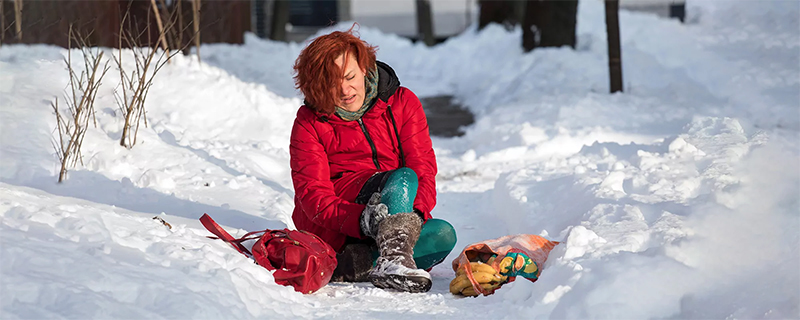
Common Causes of Slip and Fall Accidents in Winter Weather Conditions
One of the primary causes of slip-and-fall accidents during winter is the accumulation of snow and ice. When snow is not promptly removed or treated with necessary ice-melting substances, it can form a thin layer of ice on walkways and driveways.
This icy surface can be difficult to spot and significantly increases the risk of losing balance and suffering a fall.
Not only can natural accumulations of ice cause slip and fall accidents, but improper removal of ice can also be a hazard.
If a property owner fails to adequately remove ice or does so in a haphazard manner, it can result in uneven surfaces or patches of ice that are difficult to navigate. Such conditions can be particularly dangerous in high-traffic areas like parking lots or sidewalks.
Another common cause of slip-and-fall accidents in winter weather conditions is the presence of water or moisture. When ice begins to melt or when snow is tracked indoors, it can create wet and slippery surfaces.
Inadequate lighting during snowy months can also contribute to slip-and-fall accidents. With shorter days and longer periods of darkness, it becomes crucial for property owners to ensure that all walkways and common areas are well-lit.
Poor lighting can obscure hazards such as patches of ice or uneven surfaces, making it difficult for individuals to navigate safely.

What Injuries Do Falls on Ice and Snow Cause?
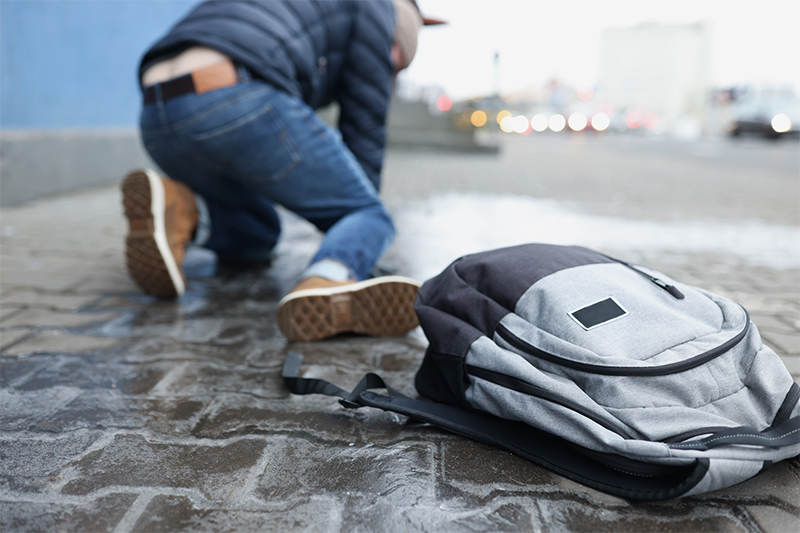
What To Do After a Slip & Fall Accident Involving Ice or Snow
1. Seek Immediate Medical Attention:
Your health and well-being should be your top priority. Even if you don’t feel immediate pain or notice any visible injuries, it’s essential to seek medical attention as soon as possible. Some injuries, like traumatic brain injuries or internal injuries, may not be immediately apparent but could have serious long-term consequences.

2. Document the Scene:
If you are physically able to do so, document the conditions of the accident scene. Take photos of the area, including any ice or snow accumulation, inadequate signage or warnings, and any other relevant factors that may have contributed to your slip and fall accident. This evidence can be valuable in supporting your personal injury claim later on.
3. Report the Accident:
Notify the property owner or manager of the premises where the accident occurred as soon as possible. It’s important to document your report and keep a record of the conversation. A timely report establishes that the incident did indeed occur and notifies the responsible party of the potentially dangerous conditions on the property.
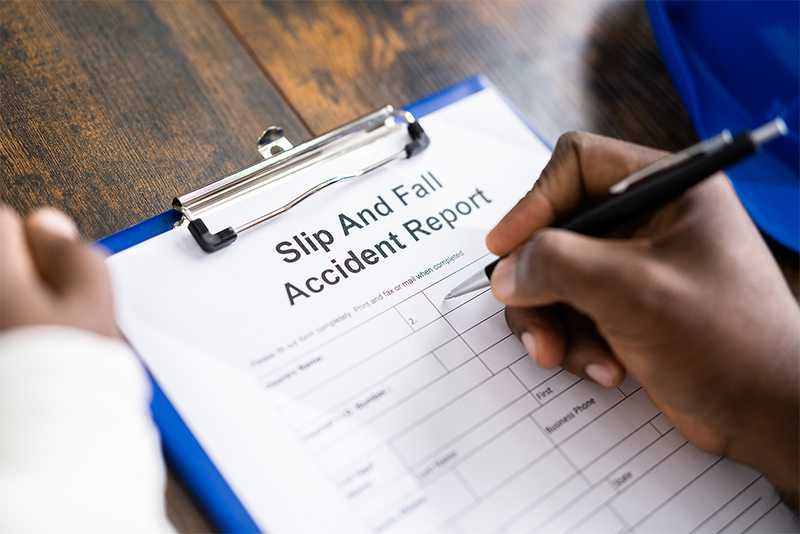
4. Gather Witness Information:
If there were any witnesses to the accident, obtain their contact information. Eyewitness accounts can play a role in supporting your claim and establishing liability. Be sure to ask for their names and phone numbers so that they can be reached later if needed.
5. Preserve Evidence:
Preserve any evidence related to your slip and fall accident. This includes keeping your clothing and footwear exactly as they were at the time of the incident. Do not wash or alter them, as they may serve as vital evidence in proving the dangerous conditions and the extent of your injuries.

6. Consult with a Personal Injury Attorney:
Reach out to an experienced personal injury attorney who specializes in slip-and-fall accidents. They can guide you through the legal process, assess the strength of your case, and help you understand your rights and options for seeking fair compensation. Insurance companies often have lawyers on their side, so having a skilled attorney by your side can level the playing field.
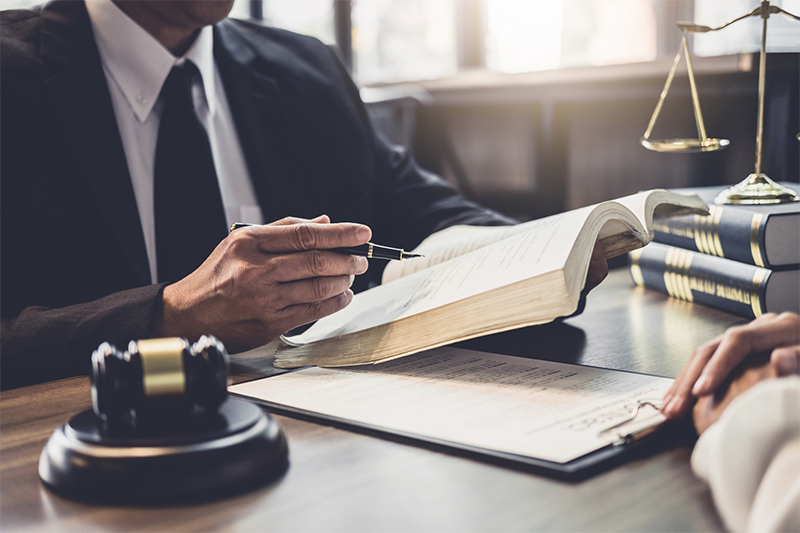
7. File a Personal Injury Claim:
If you believe that your slip and fall accident was caused by the negligence or failure of the property owner or manager to maintain safe conditions, you may be entitled to compensation. Your attorney will help you file a personal injury claim against the responsible party and negotiate on your behalf to seek fair compensation for your medical expenses, lost wages, and pain and suffering.
Tips for Walking Safely in the Winter
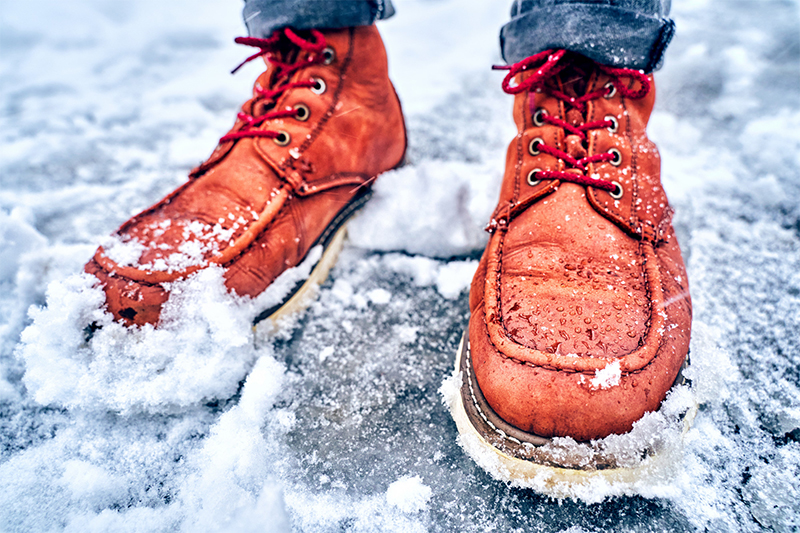
By following these tips, you can reduce the chances of slipping and falling while walking in winter conditions. However, if you do experience a slip and fall accident, it’s important to seek medical attention.
Determining Liability if You Are Injured in a Snow-Related Slip and Fall Accident
Several factors are taken into consideration to establish who is responsible for the accident and subsequent injuries. Here are some important points to consider:
Property Owner’s Duty of Care:
Property owners have a legal duty to maintain their premises in a reasonably safe condition to prevent foreseeable injuries. This duty includes taking action to address hazardous conditions caused by ice and snow. If a property owner fails to fulfill this duty, they may be held liable for injuries caused by slip and fall accidents on their property.

Negligence:
To establish liability, it must be proven that the property owner was negligent in their duty of care. This means demonstrating that they knew or should have known about the dangerous condition, and failed to take appropriate steps to address or warn others about it. Examples of negligence in snow-related slip-and-fall cases can include not clearing snow and ice in a timely manner or failing to apply salt or sand to prevent slippery surfaces.
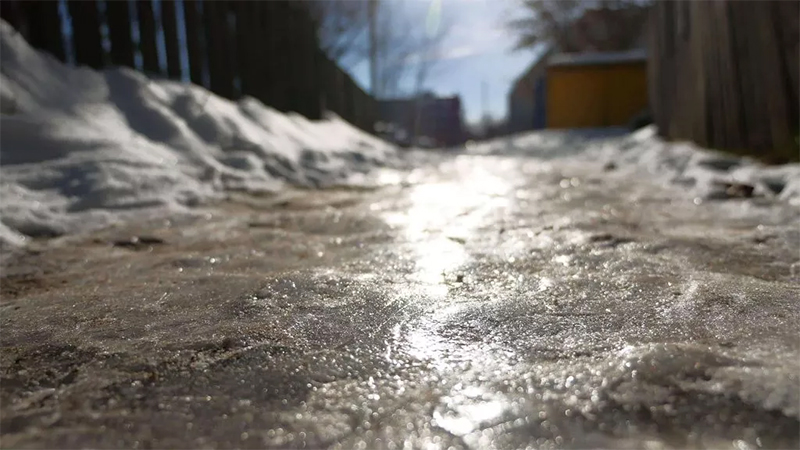
Notice:
In some cases, the property owner may argue that they were not aware of the hazardous condition and thus should not be held liable. However, the concept of “notice” comes into play, which means the owner should have had knowledge of the condition. This can be proven by showing that the condition was present for a significant period, or that there were previous similar incidents on the property.
Comparative Negligence:
It is important to note that liability may not always rest solely on the property owner. If it is determined that the injured person contributed to their own accident by not taking reasonable care or disregarding warnings, their compensation may be reduced based on a concept called comparative negligence. Each party’s degree of fault will be evaluated, and the injured person’s compensation will be adjusted accordingly.
Seeking Legal Assistance:
Navigating the legal complexities of determining liability in snow-related slip-and-fall accidents can be challenging. It is advisable to seek the help of a personal injury lawyer experienced in premises liability cases. They will assess the circumstances of your accident, gather evidence, and guide you through the legal process to protect your rights and pursue fair compensation for your injuries.
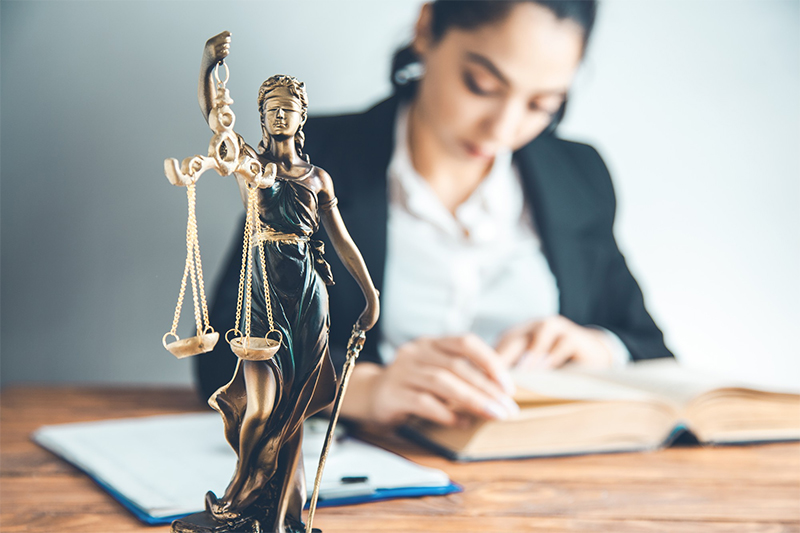
Insurance Companies:
In ice or snow-related slip-and-fall accidents, the responsible party’s liability insurance typically covers the costs associated with the injuries. However, insurance companies often have teams of lawyers working to minimize their payout. Having a skilled personal injury attorney on your side can level the playing field, helping you negotiate with insurance companies to obtain the settlement you deserve.

Contact the hard-hitting personal injury lawyers at Goldberg and Loren today for expert legal representation.
Sources:
[1] How to avoid winter slips and falls. (2018, January 9). Mayo Clinic Health System. https://www.mayoclinichealthsystem.org/hometown-health/speaking-of-health/winter-weather-are-falls-and-slips-avoidable

